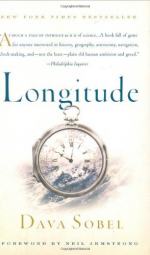
|
| Name: _________________________ | Period: ___________________ |
This test consists of 15 multiple choice questions and 5 short answer questions.
Multiple Choice Questions
1. What did Harrison build that still function today?
(a) Telescopes.
(b) Microscopes.
(c) Clocks.
(d) Telephones.
2. When did Harrison learn of the Longitude Prize?
(a) 1712.
(b) 1735.
(c) 1700.
(d) 1727.
3. Besides clocks, what was Hooke known for?
(a) A biologist, a surveyor, and a physicist.
(b) A cartologist, a botanist, and an astrologist.
(c) A capitalist, a dramatist, and an environmentalist.
(d) An astronomer, a geologist, and a realist.
4. What does the term "dead reckoning" refer to?
(a) A way to verify the number of sailors lost at sea.
(b) An advanced way to determine longitude using clocks.
(c) A primitive way to navigate at sea using estimates from a fixed point.
(d) An early way to navigate at sea using the position of stars and the moon.
5. Harrison was an avid ___________.
(a) Photographer.
(b) Reader.
(c) Astronomer.
(d) Cricket player.
6. Where was the destination the Centurion was sailing for?
(a) Tierra del Feugo.
(b) Scilly Islands.
(c) Cape Noir.
(d) Juan Fernandez Island.
7. What was Flamsteed's reaction to his maps being seized?
(a) He burned most of his maps.
(b) He was so frustrated he gave up the quest to solve longitude.
(c) He made incorrect copies and gave those to the British government.
(d) He angrily turned them all over to Newton.
8. What was Giovanni Domenico Cassini famous for?
(a) Discovering the moons of Jupiter.
(b) Inventing the pendulum clock.
(c) Sailing around the world.
(d) Publishing accurate maps.
9. Hooke nor Huygens were able to:
(a) Collaborate on a working clock.
(b) Produce a clock that worked at sea.
(c) Collect on the monetary prize offered for solving the problem of longitude.
(d) Get the Royal Society to declare a winner.
10. When measuring longitude, each hour of time difference between the ship and starting point marks a progress of how many degrees of longitude?
(a) 15.
(b) 25.
(c) 5.
(d) 30.
11. Who was Harrison's right-hand man in building clocks?
(a) His son, Jon.
(b) His son, William.
(c) His friend, Newton.
(d) His father, Joe.
12. What advantage did the magnetic variation method have over astronomical approaches at determining longitude?
(a) Longitude could now be charted on a map.
(b) It did not depend on knowing the time at two places at once.
(c) It didn't rely on wouding animals.
(d) It utilized new technology in clockmaking.
13. What is the main point of Chapter 6: The Prize?
(a) Explain the clock based approach to longitude.
(b) Explain the goal of the people in the book: win the prize by solving the problem of longitude.
(c) Award a prize of land for an article published about latitude.
(d) Determine the winner of the longitude prize.
14. Who explained the moons of Jupiter with the velocity of light?
(a) Ole Roemer.
(b) Tycho Brahe.
(c) Galileo.
(d) Cassini.
15. Who developed the "lunar distance method" to longitude?
(a) John Flamsteed.
(b) Ole Roemer.
(c) Admiral Shovell.
(d) Johannes Werner.
Short Answer Questions
1. At the end of Chapter 6: The Prize, how had Newton changed his thinking about the longitude problem?
2. Thirty miles is how many degrees of longitude?
3. What is the main difference in measuring longitude and latitude?
4. After the Association ran aground and the captain's body was found, what of value was found on him?
5. The moon travels a distance roughly equal to its own width every _________.
|
This section contains 582 words (approx. 2 pages at 300 words per page) |

|




